A little history of LGBTQ+ love

Love between LGBTQ+ people has existed throughout the whole of history, and our own collections testify to that fact. Here we've taken the opportunity to highlight some historical LGBTQ+ relationships that we think you should know about. The artworks and objects discussed here are part of National Museums Liverpool's collections and all relate in some way to intimate relationships between members of the same sex, both real and fictional, which go beyond platonic friendship in some way. All of these partnerships offer, in their own way, an alternative to the type of heterosexual relationship that continues to be socially dominant.
Antinous and Hadrian
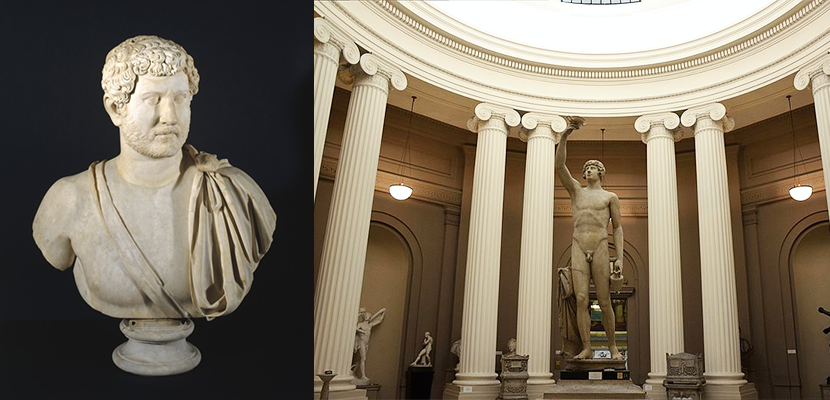
Bust of Emperor Hadrian (left) from World Museum's collection and Statue of Antinous (right) from the Lady Lever Art Gallery's collection. Antinous and Hadrian are one of the most famous homosexual couples in Roman history. Hadrian was married to the Roman Empress Vibia Sabina but many ancient sources reveal that he also had several homosexual relationships. This wasn't uncommon in ancient Rome, as homosexual relationships were not considered unusual. As long as they followed certain conventions, a Roman man was free to choose sexual partners of any gender, and it was common for Roman men to enter into sexual relationships with younger men. Hadrian spent much of his early years as Emperor touring his vast empire, and it was during these travels that he met the beautiful youth Antinous. He became absolutely enamored with Antinous and invited him to accompany him on his travels around the Empire. They visited Egypt together in AD 130 and embarked on a voyage up the River Nile. Sadly, this trip ended in sorrow, as Antinous tragically drowned in the river. Hadrian mourned Antinous’ death intensely and publicly, rather than in private as was custom. After his companion's death, Hadrian had statues of Antinous built throughout his Empire and proclaimed Antinous to be a god, announcing that a city should be built on the site of his death in commemoration of him (to be named Antinoopolis). The public and official deification of humans was normally reserved for the Emperor and members of his family, so Hadrian's decision to declare Antinous a god was extraordinary.
Queen Anne and Sarah Churchill
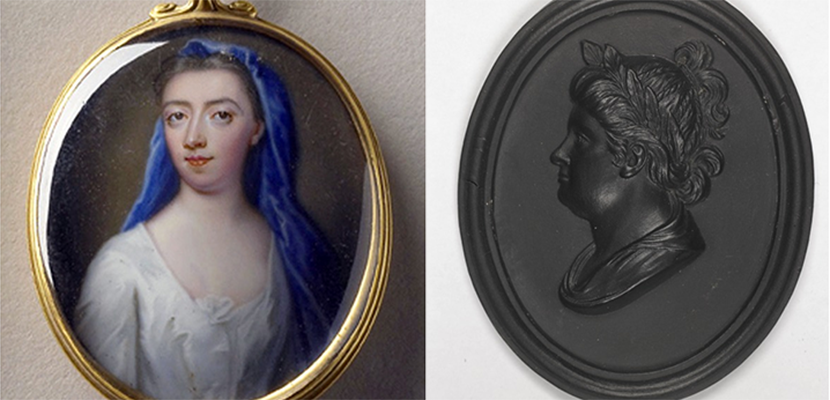
Enamel miniature featuring Sarah Churchill (left) and Medallion featuring Queen Anne (right), from the Lady Lever Art Gallery collections. Anne Stuart was Queen of England between 1702 and 1714 and Sarah Churchill was the Duchess of Marlborough. The pair were childhood friends that developed a close and intimate relationship. At that time, romantic, and sometimes erotic, relationships between women were accepted and even encouraged as a form of preparation for marriage to men. However, their relationship was to last far beyond their eventual marriages to their husbands. Their relationship was labelled an ‘immoderate passion’, inappropriate for a Princess and subjected to intense scrutiny by the Royal family. However, Anne stood firmly by Sarah even after the couple were ordered by Queen Mary to end their relationship. When she became queen, Anne promoted Sarah to the position of first lady of the bedchamber, ensuring unrestricted access to each other. Their relationship soured in later years when Sarah discovered that Anne had been spending time with Sarah's younger cousin Abigail Hill Masham.
Nelson and Hardy
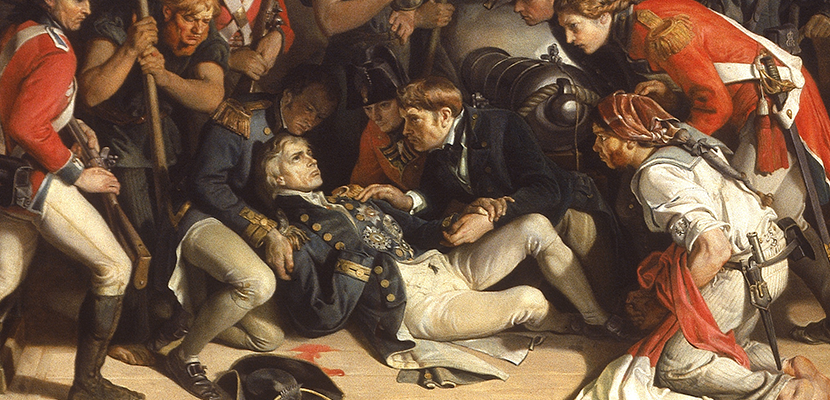
The Death of Nelson by Daniel Maclise from the Walker Art Gallery collections. Admiral Lord Nelson spent time with his longstanding close friend and colleague Captain Thomas Hardy in the hours between his fatal shooting and eventual death. His last words to him are said to have been, ‘Kiss me Hardy’. Hardy responded by kissing Nelson on his hands and forehead. These last words and the relationship between Nelson and Hardly has been the subject of much popular and academic speculation ever since. Whether or not their relationship was sexual remains unknown, but their friendship is reflective of the close relationships formed between men at sea. Intimate relationships, both sexual and platonic, could develop between those on board while they spent months away from their homes and families. These relationships did not necessarily replace a person's life at home but were important none the less. For many, Nelson’s famous request is symbolic of this sometimes hidden queer history of life at sea.
Rosalind and Celia
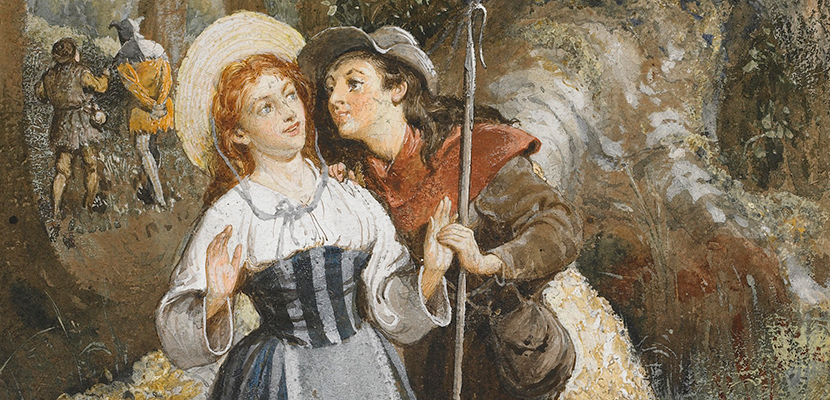
Rosalind and Celia by Valentine Walter Lewis Bromley from the Lady Lever Art Gallery collections. Celia and Rosalind are characters in William Shakespeare's play 'As You Like It'. The pair flee together from the court of Celia's father, Duke Frederick. They pool their funds and set up a home together in the forest. To avoid being recognised, Rosalind dresses as a man and calls herself Ganymede. Celia disguises herself as a shepherdess called Aliena. Rosalind’s cross-dressing is, like many other plays from the same period, used to create a scenario where both female and male same-sex desire can be expressed. Celia eventually marries a man but her strong and sometimes erotic desire for Rosalind remains a consistent theme throughout the play. Both the female, Phoebe, and the male character Orlando, fall in love with Rosalind and court her whilst she is disguised as a man. Shakespeare’s play therefore suggests that sexual desire is not fixed on one particular gender.
William Mulready and John Linnell
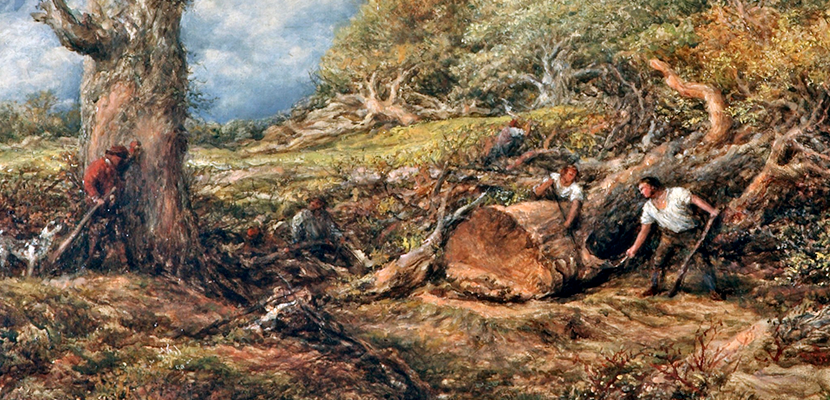 The Woodcutters by John Linnell, part of the Lady Lever Art Gallery collections. William Mulready and John Linnell met at the Royal Academy where they were training to be artists. Between 1809 and 1811 the two men lived together in the village of Kensington Gravel Pits in London and they were often observed sketching the local landscapes together. The pair perfected their technique together and sketched men at work and the local landscapes alongside each other in the open air. Their portrayal of labouring male bodies in naturalistic working landscapes was innovative at that time, and represented a departure from the picturesque landscape tradition. The exact nature of their relationship is unclear but the discovery of letters by Mulready’s wife has prompted speculation that the two artists’ relationship was sexual. In the letters, she complains of Mulready's sexual desire for young men, accuses him of taking a ‘low boy’ to his bed and blames the breakdown of their marriage on Mulready’s homosexual affair with Linnell. Do you have any more LGBT+ love stories from history? Let us know in the comments! You can find out more fascinating stories from LGBT+ history in our LGBTQ+ collections.
The Woodcutters by John Linnell, part of the Lady Lever Art Gallery collections. William Mulready and John Linnell met at the Royal Academy where they were training to be artists. Between 1809 and 1811 the two men lived together in the village of Kensington Gravel Pits in London and they were often observed sketching the local landscapes together. The pair perfected their technique together and sketched men at work and the local landscapes alongside each other in the open air. Their portrayal of labouring male bodies in naturalistic working landscapes was innovative at that time, and represented a departure from the picturesque landscape tradition. The exact nature of their relationship is unclear but the discovery of letters by Mulready’s wife has prompted speculation that the two artists’ relationship was sexual. In the letters, she complains of Mulready's sexual desire for young men, accuses him of taking a ‘low boy’ to his bed and blames the breakdown of their marriage on Mulready’s homosexual affair with Linnell. Do you have any more LGBT+ love stories from history? Let us know in the comments! You can find out more fascinating stories from LGBT+ history in our LGBTQ+ collections.
